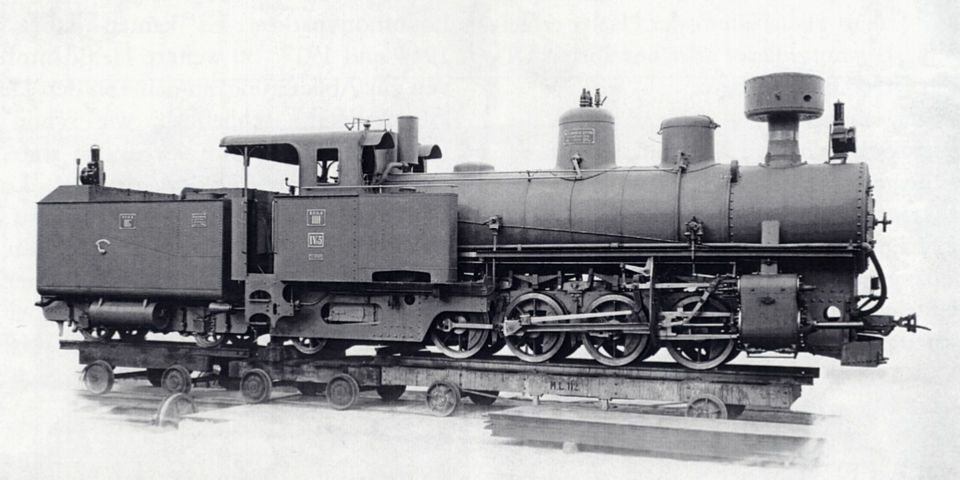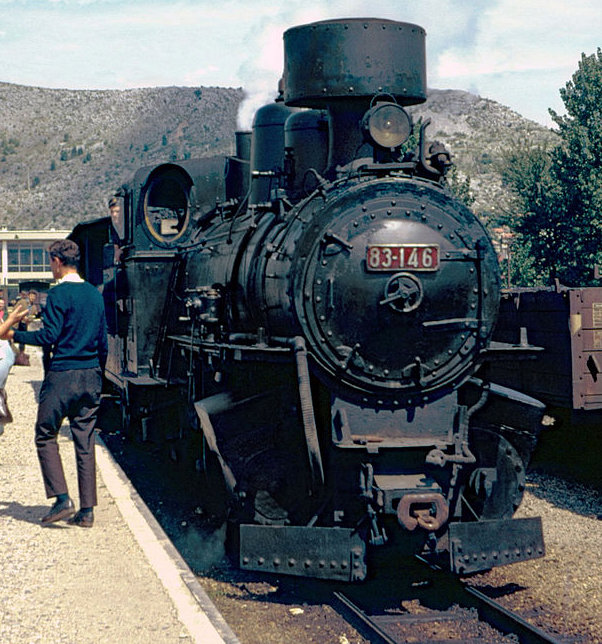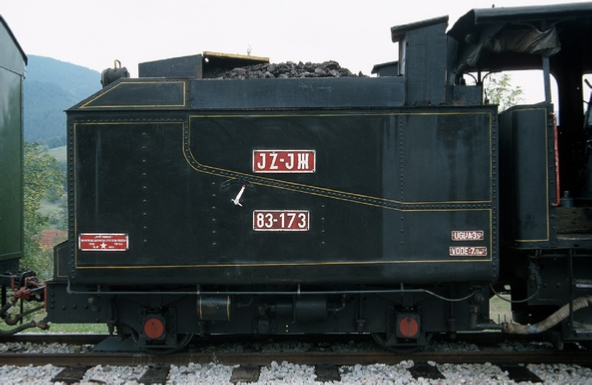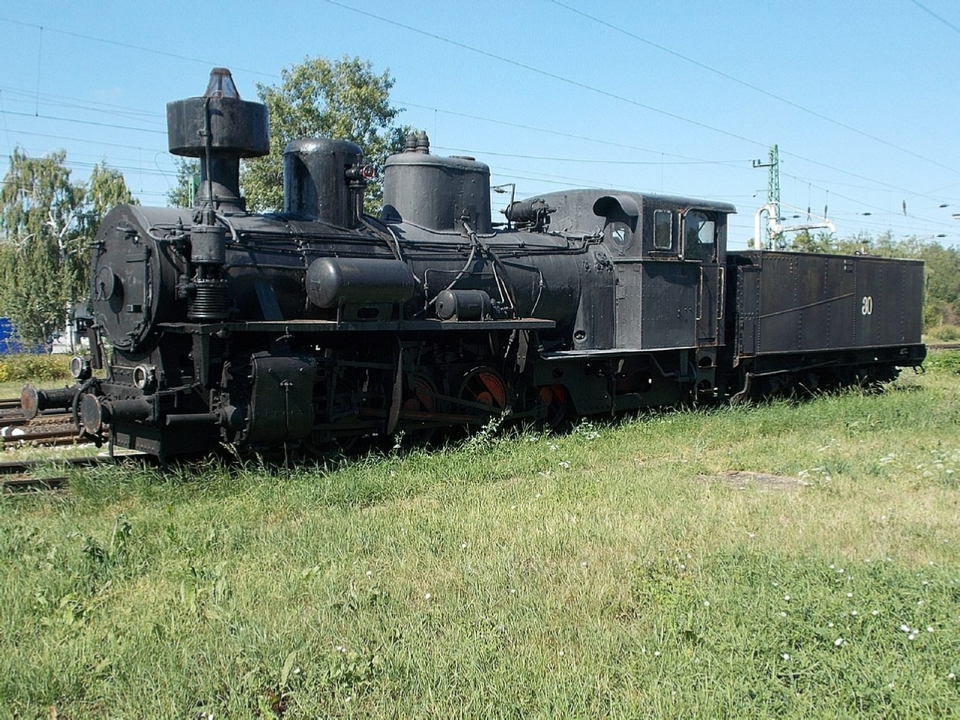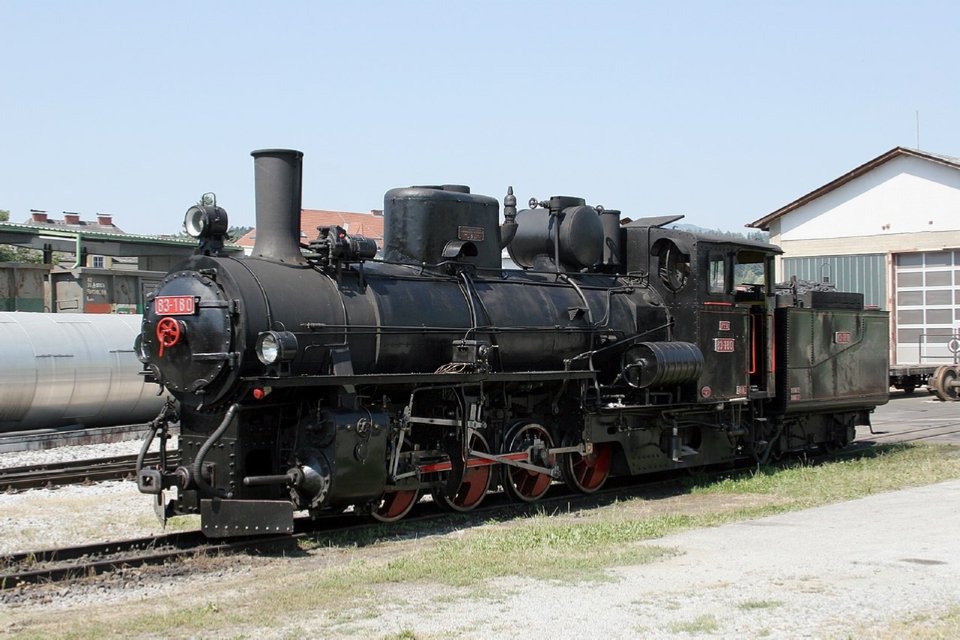The series IVa5 was a narrow- gauge steam locomotive with a tender that was built in large numbers for the Bosnian-Herzegovinian State Railways (BHStB) and the Yugoslavian State Railways (JDŽ, later JŽ). At the JDŽ, the locomotives were designated as the 83 series , and they continued to procure locomotives of this type for years to come. Manufactured from 1903-1949.
In 1878 , by decision of the Berlin Congress, Austria-Hungary occupied the previously Ottoman (Turkish) countries of Bosnia and Herzegovina and incorporated them as regions with special status into the dual monarchy of the time . Shortly thereafter, railway construction began with the then exotic gauge of 760 mm - it is still known today as the Bosnian gauge. The kk Bosnabahn, the Bosnian-Herzegovinian State Railways , later the Bosnian-Herzegovinian State Railways, operated a growing network, mostly in terrain that was difficult to overcome, with 760 mm narrow gauge throughout.
After a large number of different locomotive series, a construction succeeded in 1903 that was to become the standard locomotive on the narrow-gauge network. Krauss/Linz , specializing in local railway and narrow-gauge machines, supplied IVa 5 1000ff. a four- coupler wet -steam composite design with a tender that was to prove well-suited to the rapidly expanding narrow-gauge network. The superheated steam variant IVa 5 1100ff. could convince even more. Since the special status of Bosnia-Herzegovina provided for joint administration by the Austrian and Hungarian halves of the empire, the Budapest machine factory was also considered with individual tranches for replicas.
The end of the monarchy made Bosnia-Herzegovina part of the new SHS state . The state railways of this precursor state of Yugoslavia expanded the 760 mm network extensively and connected the Bosnian-Herzegovinian with the Serbian routes. The need for further IVa 1100ff. was big, as there were new routes to be served all the way to Belgrade . Since there were no locomotive factories in the SHS state at the time, the production orders for the 1300ff. as well as machines designated as RU to Budapest and to Germany to Jung/Jungenthal . Two Serbian private railways also ordered a total of four machines.
The IVa5 is also regarded as a model for the Mh/Mv (ÖBB 399/299) built by Krauss/Linz for the Lower Austrian state railways - the two types are occasionally confused. However, despite external similarities, they are fundamentally different. While the floor-standing boiler on the class 83 locomotives is supported by a trailing axle, the Mv and Mh of the NÖLB are auxiliary tender locomotives . The 85 series of the JDŽ is considered to be a more powerful further development of the 83 series.
The two-axle tender of the 83
Manufacturer:
Krauss/Linz , MÁVAG , Jung , Đuro Đaković
Years of Construction:
1903-1949
Axle Arrangement:
D'1 n2v D'1 h2
Gauge:
760mm / 1000mm
Length Over Buffer:
13 700mm
Top Speed:
35 km/h
Service Weight:
36t 38t
Friction Mass:
32t
Driving Wheel Diameter:
900mm
impeller Diameter:
650mm
Fixed Wheelbase:
3300mm
Total Wheelbase:
5650mm
Cylinder Diameter:
370/550mm 430mm
Grate Surface:
1.7 m²
Boiler Overpressure:
13 bars 12 bars
Evaporation Heating Surface:
112 sqm 88 m²
Superheater Area:
24 m²


